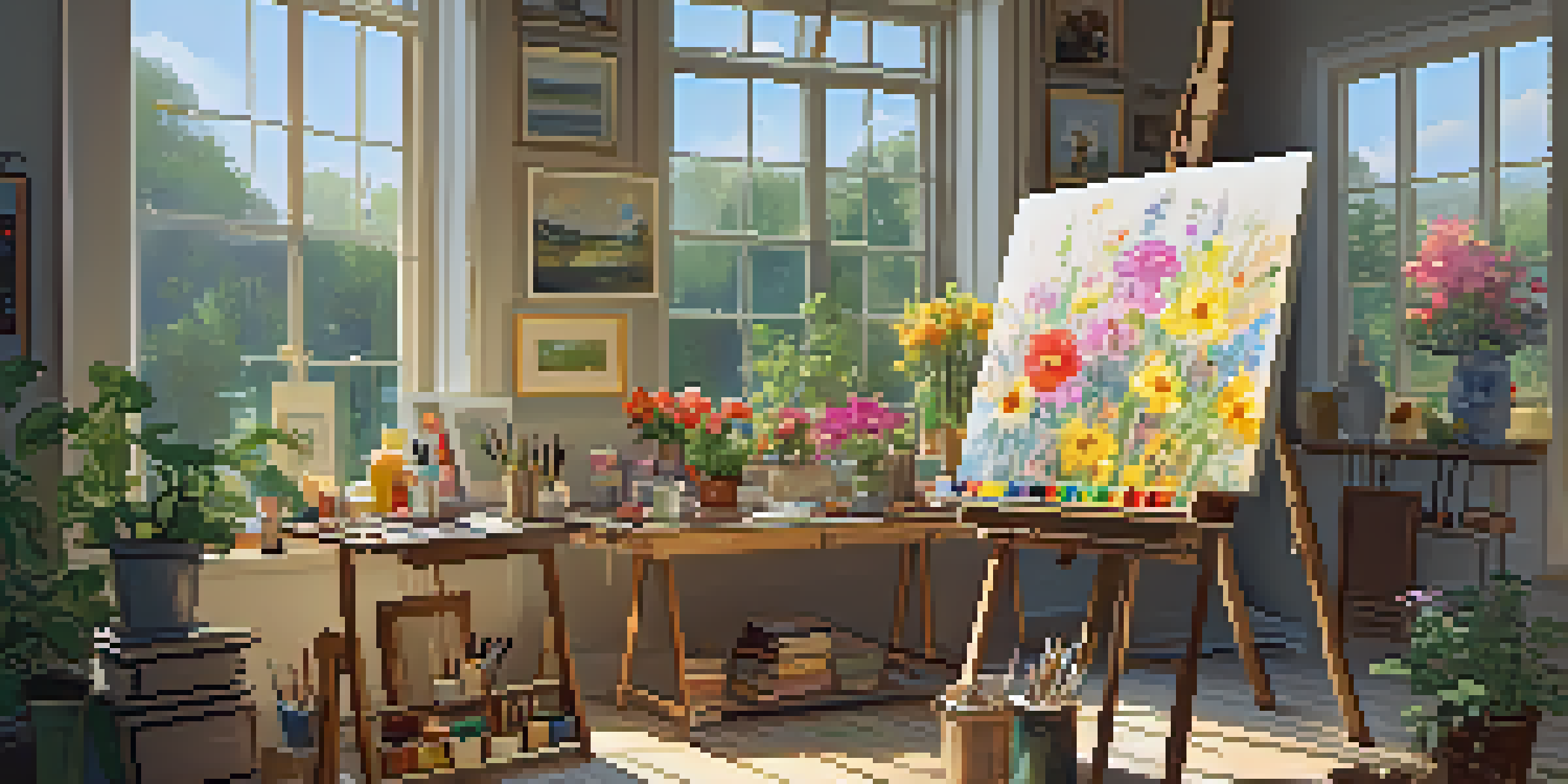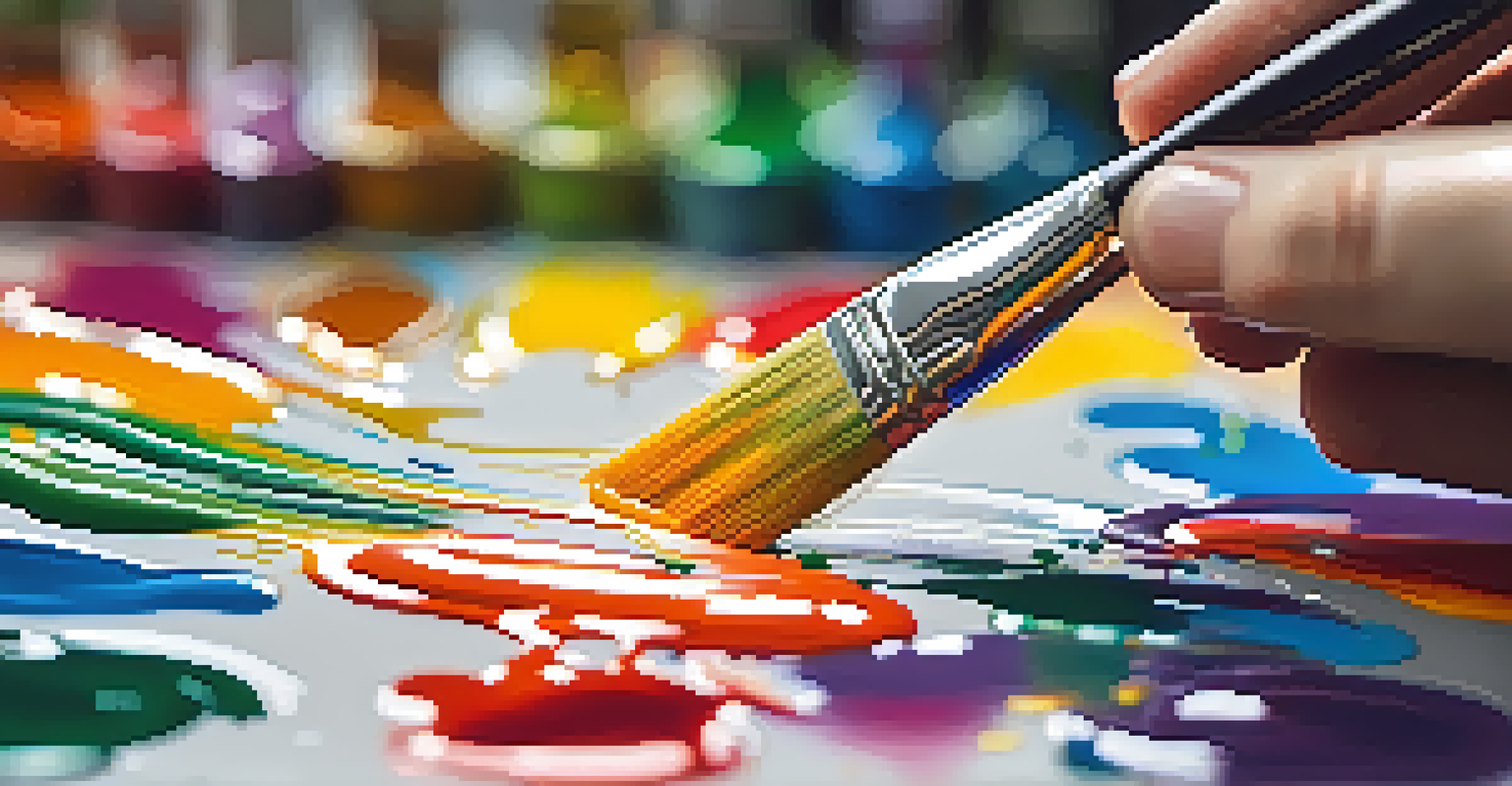Analyzing the Interaction of Text and Image in Art Critique

Understanding the Role of Text in Art Critique
Text in art critique serves as a bridge between the viewer and the artwork. It helps to articulate thoughts, emotions, and interpretations that might not be immediately apparent. By providing context, critiques can enhance our understanding of both the technical and emotional aspects of a piece.
Art is the most beautiful of all lies.
For example, a painting might evoke feelings of nostalgia, but without the accompanying text, viewers may miss the historical significance or the artist's intent. The words used can guide our perceptions and deepen our engagement with the artwork. In essence, text acts as a lens through which we can better appreciate visual art.
Moreover, the language of critique can vary significantly, from academic jargon to more casual commentary. This diversity in expression allows for a broad range of interpretations, making art accessible to everyone, regardless of their background in art history or theory.
Visual Elements and Their Narrative Power
Visual elements in art, such as color, composition, and form, can tell powerful stories on their own. When combined with text, these elements can create a richer narrative that engages the viewer more deeply. A well-chosen image can evoke emotions that words alone may not capture, illustrating the synergy between text and image.

Consider a photograph paired with a poignant quote; the image can amplify the emotional weight of the words. This relationship showcases the potential of combining visual and verbal elements to convey complex ideas. It highlights how the interplay between these two forms of communication can create a more immersive experience.
Text Enhances Art Understanding
Text in art critique serves as a crucial bridge that articulates thoughts, feelings, and interpretations, enriching our engagement with visual art.
Additionally, viewers may interpret images differently based on their personal experiences and cultural backgrounds. This subjectivity can lead to diverse interpretations of the same artwork, making the relationship between text and image even more profound. It emphasizes the importance of context in both visual and textual analysis.
The Impact of Context on Art Critique
Context plays a crucial role in how we interpret both text and images in art critique. Factors such as historical background, cultural significance, and personal experiences can shape our responses to an artwork. When critics provide context, they help the audience navigate these complexities, enhancing overall understanding.
The painter tries to master the way we perceive the world and to communicate it with images, not words.
For instance, knowing the socio-political environment in which an artwork was created can significantly change our perception of its message. A critique that includes this context can lead to a more nuanced appreciation of the piece. This interplay of context, text, and image enriches the dialogue surrounding art.
Moreover, the context in which the critique is presented—be it a gallery talk, a published article, or an online blog—can influence how the text and image interact. Different platforms might invite varied audiences, leading to distinct interpretations and discussions. This dynamic underscores the importance of considering context in art critique.
Analyzing the Relationship Between Text and Image
The relationship between text and image is not merely additive; it's transformational. When analyzed together, they can reveal deeper meanings and connections that may be overlooked when considered separately. This synergy can enrich the critique, making it a more comprehensive exploration of the artwork.
For example, a minimalist artwork paired with a detailed text may create a tension that invites viewers to question their assumptions. This interplay encourages viewers to engage more critically with both the visual and textual elements. In this way, the critique becomes an active dialogue rather than a passive observation.
Context Shapes Art Interpretation
The context surrounding an artwork, including historical and cultural factors, significantly influences how we perceive and appreciate it.
Additionally, the choice of words in the critique can influence how the viewer perceives the image. Descriptive language can evoke vivid imagery in the reader's mind, enhancing their experience of the artwork. Thus, the analysis of this relationship is crucial for a holistic understanding of art.
The Role of Emotion in Art Critique
Emotion is a key component in art critique, influencing both the creation and interpretation of art. Text can articulate feelings that an artwork evokes, while images can elicit emotional responses that words struggle to express. This duality enriches the critique, as it reflects the complexity of human experience.
For instance, a piece depicting sorrow might be explained through emotional language that resonates with the viewer. The combination of an evocative image and a heartfelt critique can create a powerful connection, allowing viewers to empathize with the artist's intent. This emotional interplay enhances our understanding of the artwork's significance.
Moreover, critics often rely on personal anecdotes to convey their emotional responses. Sharing their experiences can make the critique more relatable, inviting the audience to explore their feelings about the artwork. This personal touch fosters a sense of connection between the critic, the artwork, and the viewer.
Challenges in Combining Text and Image
While the interaction of text and image can be highly effective, it also presents challenges. One major issue is the risk of oversimplifying complex ideas. When text is used to explain an image, it can sometimes limit the viewer's interpretation, boxing them into a specific understanding.
Additionally, the balance between text and image is crucial; too much text can overwhelm the visual experience, while too little may leave viewers confused. Striking the right balance requires careful consideration of both elements and how they complement each other. This challenge underscores the importance of thoughtful critique.
Emotion Connects Viewers to Art
The interplay of emotion in both text and images fosters a deeper connection between viewers and the artwork, enhancing the overall critique experience.
Furthermore, the differences in audience engagement with text versus images can complicate this interaction. Some viewers may prefer visual stimuli, while others resonate more with written content. Understanding these differences is essential for creating effective art critiques that engage a diverse audience.
Future Directions in Art Critique
As technology continues to evolve, so too does the landscape of art critique. Digital platforms allow for innovative combinations of text and images, creating new ways for audiences to engage with art. From virtual exhibitions to interactive critiques, the future holds exciting possibilities.
For example, augmented reality could allow viewers to experience art in entirely new ways, merging text, image, and real-world environments. This integration can create immersive experiences that enhance understanding and appreciation. As these technologies develop, they will undoubtedly influence how we think about the relationship between text and image.

Moreover, the rise of social media has democratized art critique, enabling a broader range of voices to participate in discussions. This shift encourages diverse perspectives and interpretations, enriching the overall dialogue around art. As we move forward, embracing this diversity will be vital for a more inclusive understanding of art.